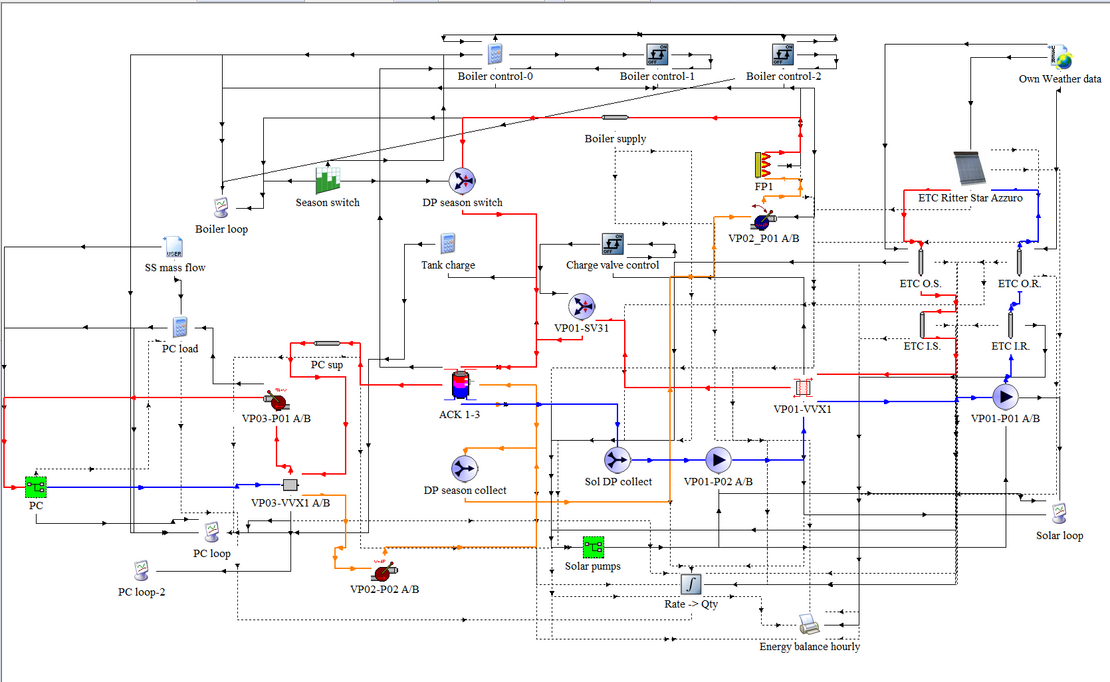WP1-1 Centralized versus decentralized collector fields in Block and District Heating Systems
Hosted by: | Högskolan Dalarna (SERC) |
|---|---|
Student: | Martin Andersen |
Started: | 01/02/2014 |
Supervisor(s): | Chris Bales at Högskolan Dalarna Jan-Olof Dalenbäck at Chalmers University of Technology |
Short description
The PhD project at Högskolan Dalarna (SERC) is being made by Martin Andersen, supervised by Chris Bales at Högskolan Dalarna and Jan-Olof Dalenbäck at Chalmers University of Technology. The main aims are to analyze the advantages and disadvantages of centralized and decentralized solar collector fields in district heating networks and to derive the technological and economic boundary conditions for profitable operation. Both de-centralized feed-in (connection on primary side) and district heat augmented systems (connection on secondary side) will be covered. Systems in operation will be closely monitored and analyzed for comparison.

The work so far has focused on computer model development of a solar-assisted block heating system in Vallda Heberg outside Gothenburg, Sweden. The network consists of low-energy houses and apartments in a new residential area, where space heating and domestic hot water are supplied via a novel heat distribution system. System data for the first year of operation shows that both the system heat demands and collected solar energy are similar to the expectations. Parts of the system has been modelled in TRNSYS and calibrated against measured data, and the results are being compared with a similar model developed with Polysun by Artem Sotnikov, PhD student at Vela Solaris.
A comprehensive, more detailed computer model of the system is being developed, incorporating system parts yet to be examined and tying these to the existing computer models. Once the whole system model is completed and successful simulations can be calibrated towards measured values, the system configuration will be varied to investigate collector field size, placement and chosen feed-in concept.
Literature studies are conducted continuously, enabling an up-to-date overview of the current development in the field and consequently adaptation of the research perspective to accommodate the present state-of-the art.
